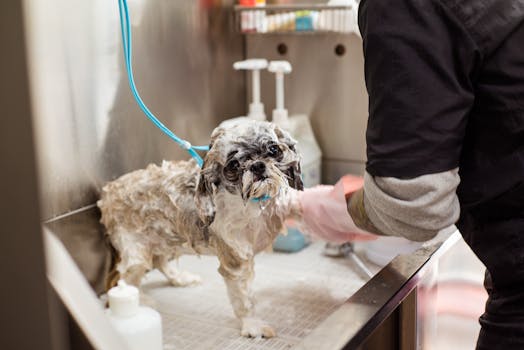The Ideal Bathing Schedule for Dogs: Striking the Perfect Balance

Bathing a dog is more than just a chore; it's a vital part of their health and hygiene. However, determining the frequency of baths can be a confusing task for many pet owners. This article delves into how often you should bathe your dog, taking into account various factors like their breed, skin conditions, and lifestyle.
Introduction
Understanding the right bathing schedule for your dog is crucial for maintaining their skin and coat health. Bathing too often can strip the natural oils from their skin, leading to dryness and irritation, while infrequent baths can cause build-up of dirt and oils, potentially leading to skin infections and discomfort. Here, we explore the optimal bathing frequency for dogs, providing a comprehensive guide tailored to meet the needs of different types of dogs.
Factors Influencing Bathing Frequency
1. Breed and Coat Type
The type of coat your dog has is a significant factor in determining how often they need a bath. For instance, oily-coated breeds like Basset Hounds may require more frequent baths to prevent the oil from building up on their skin and coat. Conversely, breeds with water-repellent coats, such as Golden Retrievers, should not be bathed too frequently to preserve the natural oils that protect their fur.
2. Activity Level
Active dogs that spend a lot of time outdoors will inevitably get dirtier and smellier faster than dogs that spend most of their time indoors. For example, a dog that loves to dig in the yard or go hiking through the woods might need to be bathed every few weeks. On the other hand, a less active dog might only need a bath every couple of months.
3. Allergies and Skin Conditions
Dogs with allergies or skin conditions may require more frequent baths as part of their treatment regimen. Medicated shampoos can remove environmental allergens from your dog's skin, helping to soothe irritation and improve comfort.
4. Seasonal Considerations
The seasons can also affect how often your dog needs a bath. During the muddy spring or after summer hikes, you might find it necessary to increase the number of baths. However, during the winter, when your dog might not get as dirty, you can reduce the frequency.
Establishing a Bathing Routine
Creating a consistent routine can help maintain your dog’s coat health, regardless of the exact frequency. Here are some steps and tips for an effective bathing process:
Pre-Bath Preparation
Before you start the bath, make sure to thoroughly brush your dog’s coat to remove any tangles or mats. This will not only make the bathing process more effective but also more comfortable for your dog.
Choosing the Right Shampoo
Select a shampoo specifically designed for dogs, as human shampoos can be harsh on their skin. If your dog has a specific skin condition, consult your vet for a medicated shampoo recommendation.
Bathing Technique
Ensure the water is lukewarm and gently wet your dog’s coat. Apply shampoo and massage it in with your hands or a soft washing mitt. Avoid getting shampoo in their eyes, ears, or nose. Rinse thoroughly, as residue can cause skin irritation.
Drying
After the bath, it is important to dry your dog thoroughly. Towel dry your dog first, then use a hairdryer on a low heat setting if your dog is not afraid of it. Make sure to dry completely, especially during colder months.

Common Questions About Bathing Dogs
Q: Can I bathe my puppy? Yes, puppies can be bathed, but it's important to wait until they are at least eight weeks old and to use a puppy-specific shampoo.
Q: How do I make bath time less stressful for my dog? You can make bath time a positive experience by gradually acclimatizing your dog to the process. Offer treats and gentle praise throughout the bath to associate bath time with positive things.
Q: What if my dog really hates baths? For dogs that detest bath time, consider alternatives like waterless shampoos or professional grooming services that are equipped to handle nervous dogs.
Conclusion
The right bathing schedule for your dog depends on a variety of factors, including their breed, skin condition, and lifestyle. By considering these elements and following a consistent bathing routine, you can ensure that your dog stays clean and healthy without over-bathing. Remember, when in doubt, consult your veterinarian to get advice tailored to your dog’s specific needs.



